How a tenderfoot’s horse trek in the Sierra showed him the magic of this pristine high country

Travel writer Christopher Reynolds takes a pack trip into the Eastern Sierra for four days of riding, fishing and camping with a team from Rock Creek Pack Station outside Bishop.
Shane was a strong, sure-footed horse, about 20 years old, raised in Texas. He had plenty of ideas about how an excursion into the Eastern Sierra should go, especially the grazing and drinking between meals.
I had different ideas, and the reins. Occasionally, there was friction.
But for four days in late June, we were a team clambering up switchback trails and crossing creeks full of rushing water that had surely been snow the day before.
Together, as part of a pack trip that began north of Bishop at Rock Creek Pack Station, we threaded through forests of lodgepole pine and quaking aspen into a world of jutting peaks, clear lakes, clean air, gullible trout and a few mosquitoes.
I’d never felt as close to this rugged, pristine high country.
See more Sierra pack trip photos »
Pack stations, which spend their summers sending travelers into the wilderness with horses and mules, are in many ways a throwback to the 19th century. But a dozen still have licenses to operate in the Eastern Sierra’s Inyo National Forest.
The big melt of last winter’s massive snowfall has made their 2017 season a delicate enterprise. Though the peaks are snowier and the scenery is greener than they have been in years, the storms damaged many roads and trails.
But all or nearly all of the Eastern Sierra’s pack-animal operations are open, including Frontier Pack Train at June Lake, Glacier Pack Train in Big Pine, Cottonwood Pack Station in Independence, Mammoth Lakes Pack Outfit in Mammoth Lakes, McGee Creek Pack Station at Crowley Lake, Rainbow Pack Outfitters near Bishop, and Red’s Meadow Resort & Pack Station in Mammoth Lakes.
“Some of us were a little late getting open, but they’re open now,” said John Summers, owner of Mammoth Lakes Pack Outfit. In fact, packers say conditions will be good for August and September guests, although luring them will be a challenge because many schools have resumed classes.
Hitting the trail
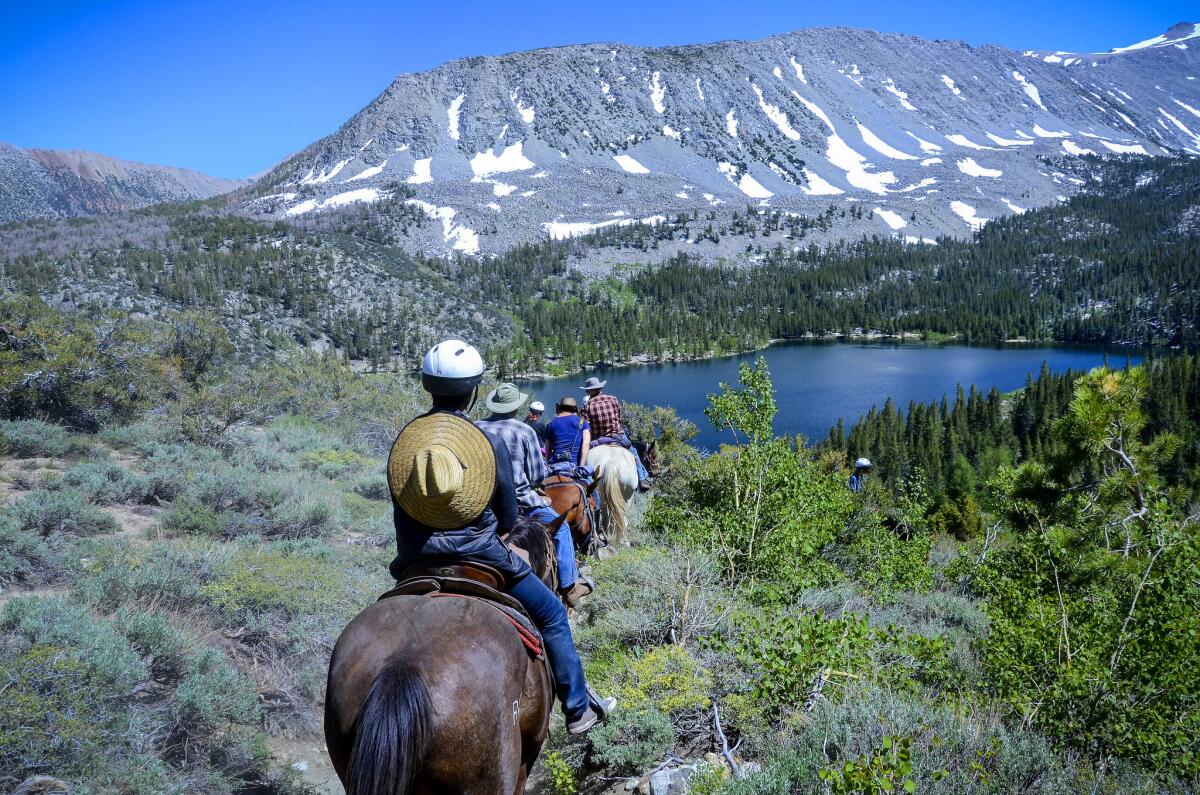
I showed up on the morning of June 26 at Rock Creek Pack Station, 33 miles northwest of Bishop.
The station, run by the London family since 1947, uses about 130 horses and mules each summer. It offers trips, from a two-hour outing to a 30-day expedition, with themes that include fishing, photography, Mt. Whitney and wild mustangs.
I paid $840 (before taxes and tip) for my four-day, three-night trip.
Our traveling party consisted of three guides (traditionally known as packers), me and seven members of the Johanson-Palermo family, six from Los Gatos, Calif., one from Fargo, N.D.
We began with a leisurely ride to the banks of Davis Lake, about five miles up slope from the nearest road and about 9,800 feet above sea level in the John Muir Wilderness.
This was the first pack trip for all of us, and we were all novice or intermediate riders. But we had veteran packers Bryan Kaiser (17 summers in the Sierra), Hilary Bruegl (four summers) and Jackson Stoll (two summers) to keep us out of trouble as we trooped through the sometimes soggy forest.
ALSO: A weekend escape to Colorado's Black Canyon of the Gunnison »
Meanwhile, a second group of packers had loaded tents and other supplies onto the backs of six mules and headed up the same trail.
“We typically like to keep them right around 150 pounds when we’re packing,” Kaiser told me. “But they can carry as much as 600 pounds.”
We set up our tents about 100 feet from Davis Lake, one of nine strung along Hilton Creek, while the packers settled the horses at the edge of our camp and put together the kitchen.
Afterward, we flopped on rocks to gaze at the peaks that surrounded us, several of them named for railroad magnates, including Mt. Huntington (12,405 feet) and Mt. Stanford (12,838 feet).
I gradually became aware of a steady, mysterious roar, like an unseen interstate. At first I thought it was the wind, which was raising big ripples on the water. But, no, it was the waterfall across the lake, so tame most years that it hadn’t been named.
Dinnertime brought more revelations. The good news was that when you have mules, you need not eat freeze-dried everything. By the time our trip ended, we’d eaten chicken, pork, sausage, bacon, steak, potatoes, rice, salad, fruit, vegetables and a few fresh-caught trout.
The bad news — an old story among outfitters but unexpected for several of us customers — was that the Forest Service bans campfires at Hilton Lakes.
I know it’s for safety’s sake, but nobody dreams of circling chairs at dinnertime and staring at the cold dirt where a fire should be while the temperature drops from about 70 to about 40.
The unconnected life
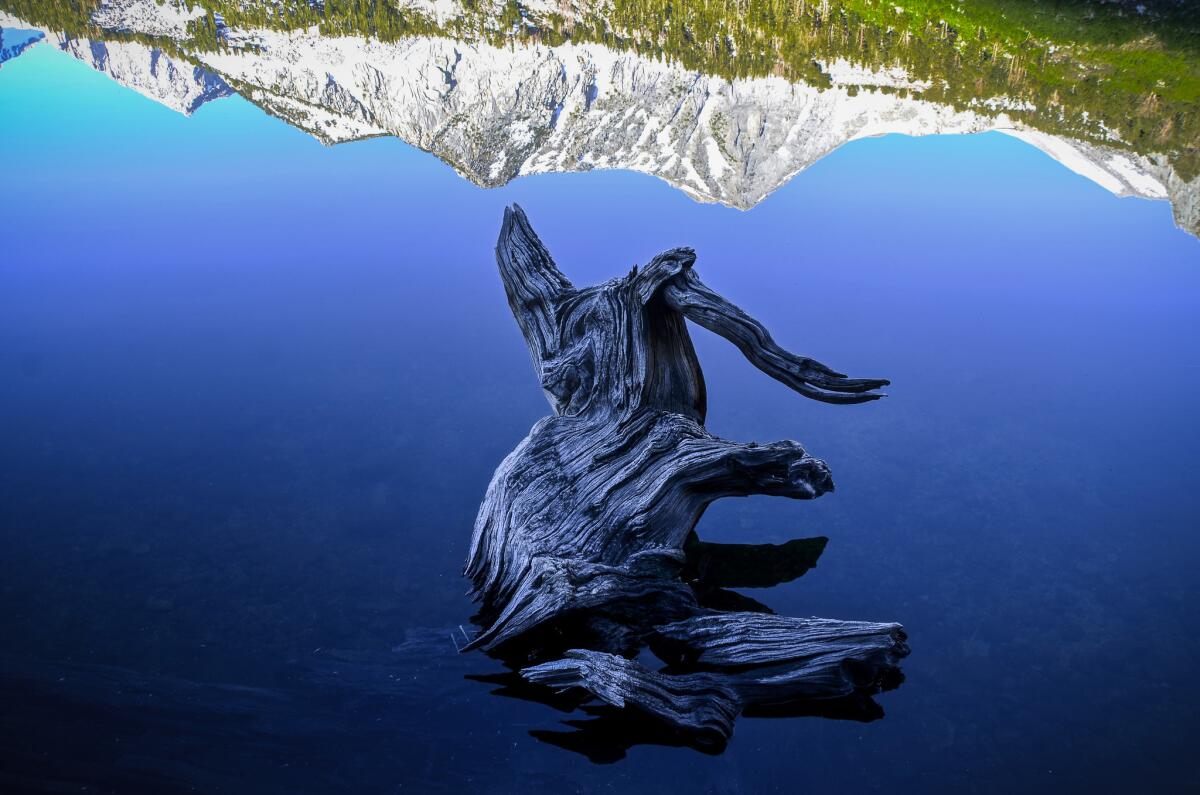
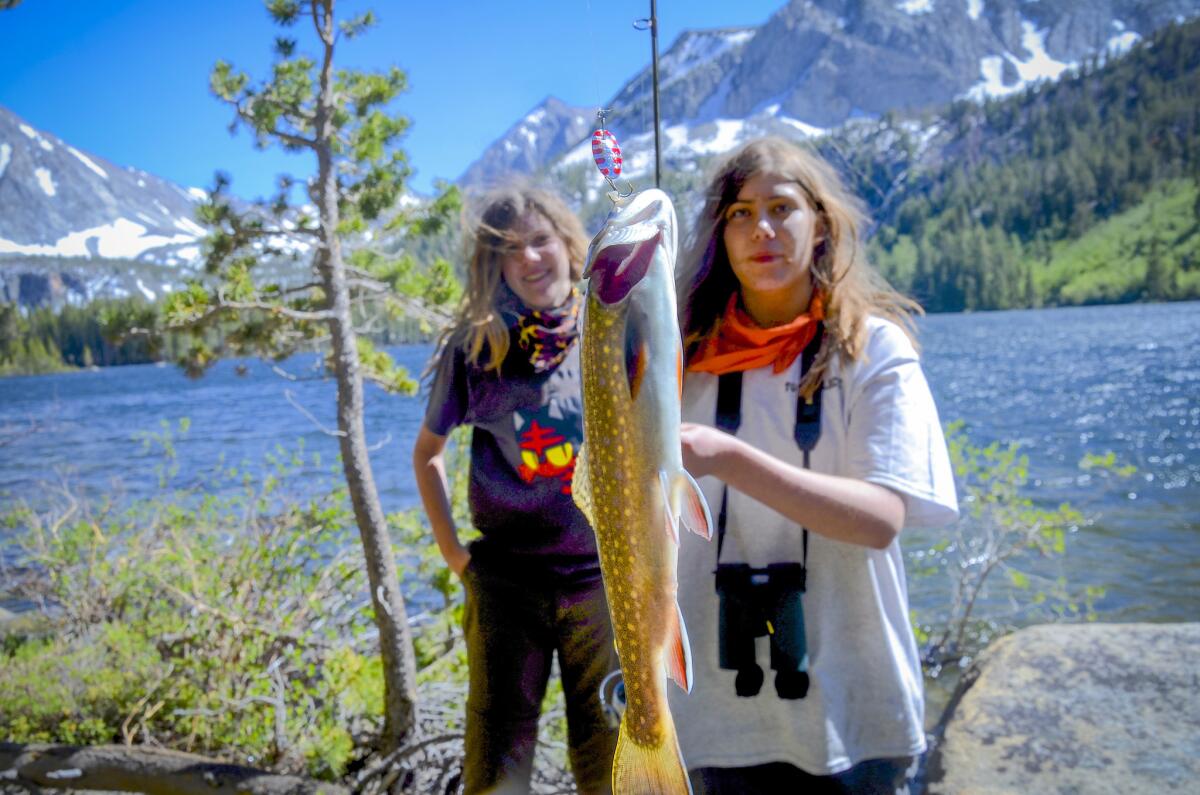
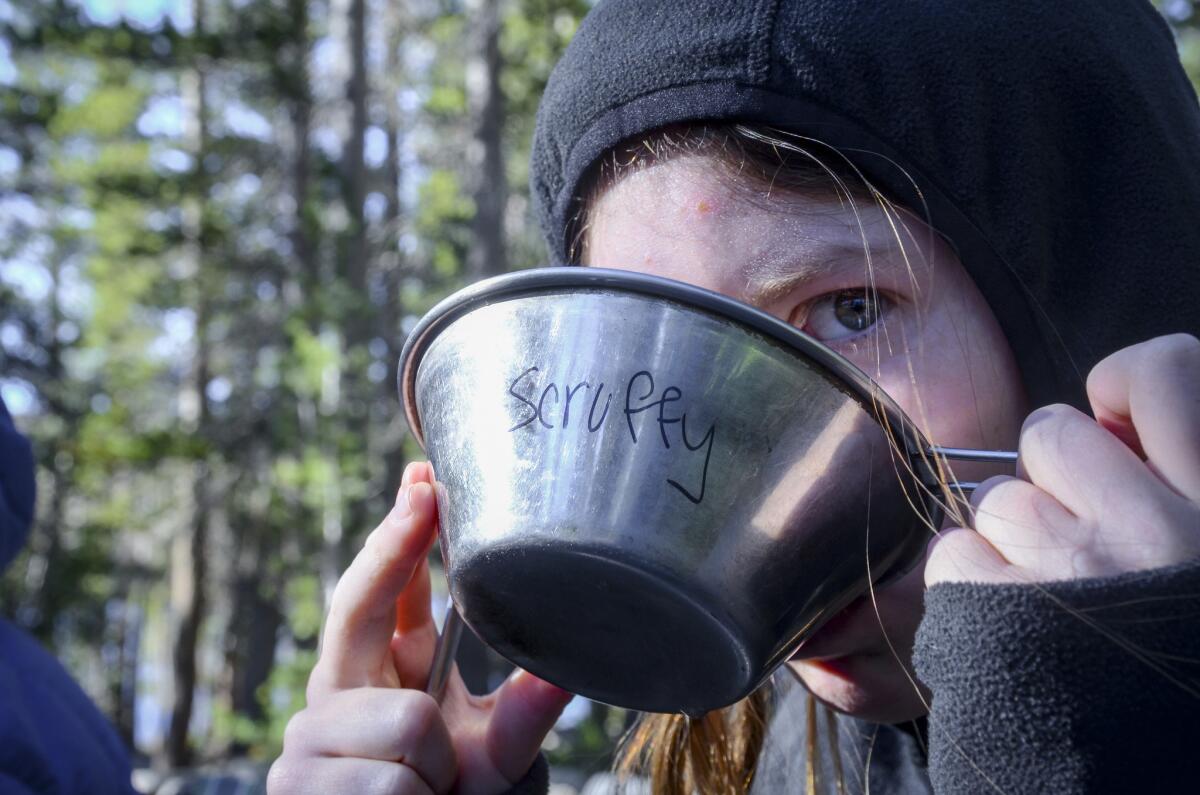
Still, we adapted, especially the four teenagers, who began the journey with their thumbs almost visibly twitching from cellphone withdrawal.
Disconnected from the grid, they gave themselves cowboy names, whittled, hummed theme songs that nobody older than 20 had ever heard, and played cards.
Olivia Palermo, 16, caught her first fish (a trout of about 8 inches), named it Jimmy, and ate it, all in her first six hours on the lake.
Leo Palermo, Olivia’s 13-year-old brother, performed a circus-worthy horseback limbo maneuver to dodge a nasty branch on a ride up a steep, snowy slope.
Trevor Dales, 13, cut a deal to wash dishes after dinner so he could A) get an extra serving of sausage and B) get his hands into some wonderfully warm water on a cold, windy night.
Kami Decker, 16, chose the best cowboy name of the bunch — Scruffy — and kept riding even when her buddy Olivia bowed out to catch more fish.
Among the adults, David Johanson; his wife, Karen Johanson; and his brother John Johanson (who had come from Fargo) did a lot of fishing. I cast a few times but mostly took photos and collected pack-station vocabulary.
Dunnage pack: the bundle of your possessions that a packer loads onto a pack animal.
Spot trip: when a packer and animals deliver you and your gear (including food) to a campsite where you’ll fend for yourself until he or she returns to help with the trip back to civilization.
All-expense trip: what we did, with packers and animals always present, cooking and food included, and most gear provided.
Exploring on horseback
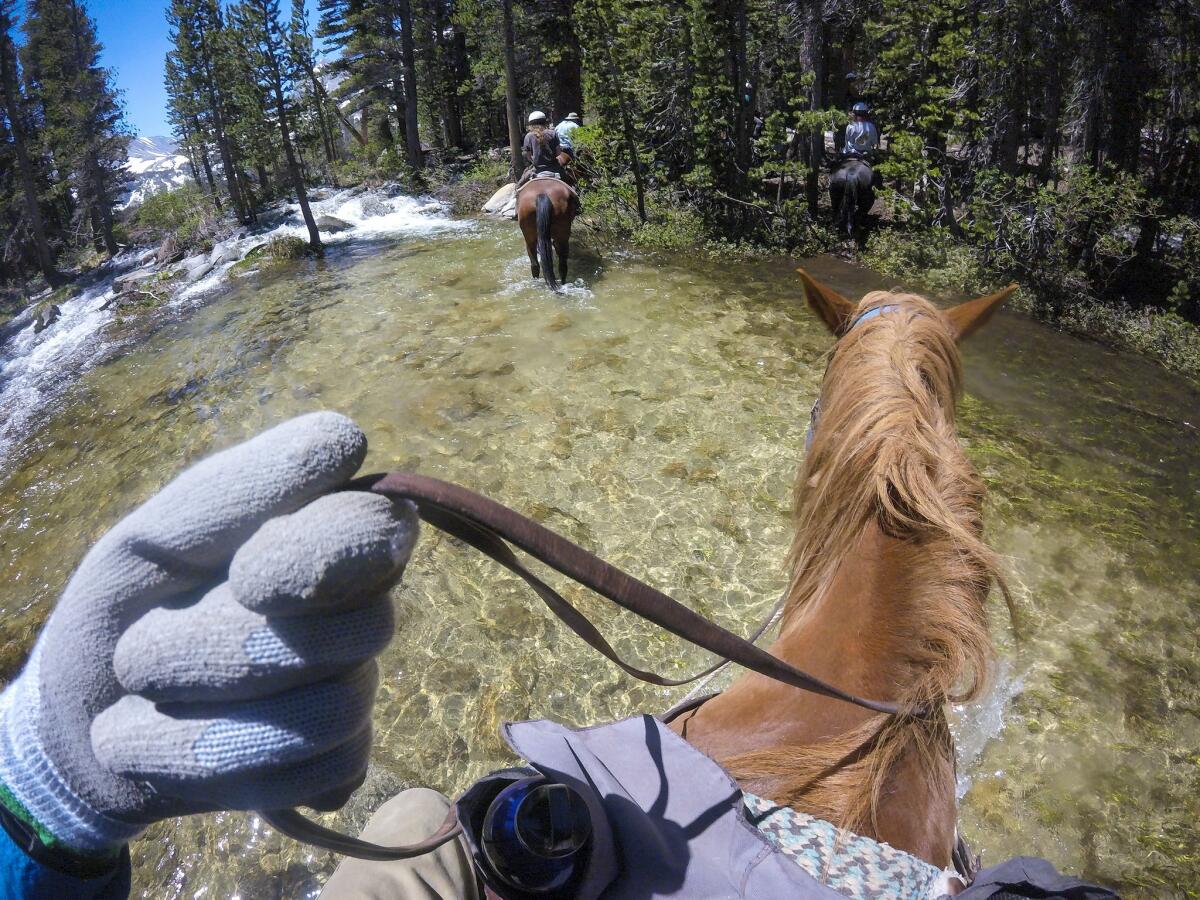
Every day we had a different expedition on horseback, beginning and ending with crossing the creek next to our campsite. The water was 2 to 3 feet deep, and there were plenty of loose stones under that cold, clear flow, but the animals chose their steps carefully.
We rode one to four hours a day. Our saddle-related aches and pains eased, and we got to know our horses better.
Later, pack station owner Craig London told me Shane had been broken in by a blind trainer.
“A great guy — I don’t know how he did it,” London said, adding that Shane “has always been a favorite. Doesn’t jump, doesn’t spook.”
The water was always with us. One day, we tried to reach the third lake in the Hilton Lakes chain, but the slopes were so covered with snow and runoff that we had to turn around.
On the way back to camp, however, we got close to that roaring waterfall. Water giveth and water taketh away.
And then on Day 3, a little after sunset, the wind died. The lake’s surface went glassy, and the landscape was reborn: Not only did we have twice as many mountains, thanks to new reflections on the water, but we also had the entire panorama cast in the bluish light of the moon.
Somehow, our campsite was now a vast Japanese wood-block print, impossibly still, harmonious and monochromatic.
On the fourth morning, the lake was still glassy, which made it hard to leave. But it was time.
We rolled up our sleeping bags, collapsed the tents, saddled up. Shane harrumphed a time or two, then carried me one more time across that swollen creek.
If you go
Several sources maintain lists of pack-trip outfitters in the Eastern Sierra, including the National Forest Service, the Bishop Chamber of Commerce, Mono County and Eastern Sierra Packers.
Rock Creek Pack Station, 9001 Rock Creek Road, Bishop, Calif.; (760) 872-8331. Prices vary by trip. Four-day trail rides to Hilton Lakes start at $695 per person.
Where to sleep before and after: Because many rides start early in the morning and end in the afternoon, it’s a good idea to spend the nights before and after the trip near the Pack Station. The closest rustic option is Tom’s Place Resort (8180 Crowley Lake Drive, Crowley Lake; [760] 935-4239), 25 miles north of Bishop. It has cabins ($75-$150 a night), private lodge rooms ($65-$75) and beds in dorm rooms ($30-$35 per bed).
One very comfortable option, with pool and dining room, is the Creekside Inn (725 N. Main St., Bishop; [760] 872-3044), where rooms for two typically are $140-$180 in summer.
Follow Reynolds on Twitter: @MrCSReynolds
Sign up for The Wild
We’ll help you find the best places to hike, bike and run, as well as the perfect silent spots for meditation and yoga.
You may occasionally receive promotional content from the Los Angeles Times.




